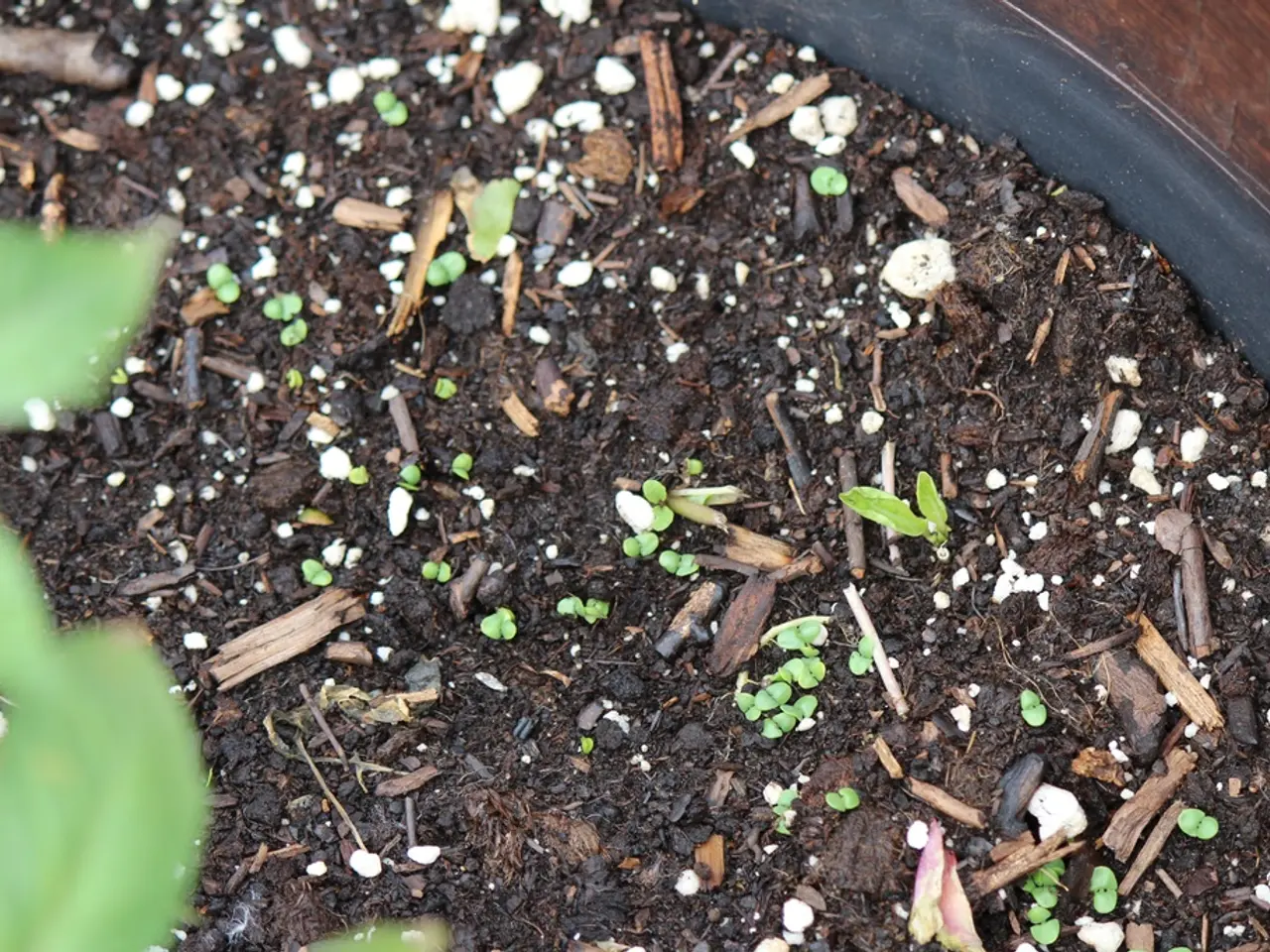Transforming Clays: Plants Aid in Loosening the Soil's Consistency
In the realm of gardening, clay soil can pose a challenge due to its compact nature and poor drainage. However, with the right approach, it is possible to transform clay soil into a thriving garden bed. Here are some effective methods for amending clay soil.
Firstly, incorporating organic matter into clay soil plays a significant role in improving its structure and fertility. Compost, sweet peat, bark soil conditioner, and peat moss are all effective at breaking up the clay and adding essential nutrients. Organic materials improve soil structure and fertility without causing harmful long-term effects. Aim for a thick layer of 2 to 8 inches and fork or dig it into the soil, being careful not to turn over the soil completely.
Cover crops, such as clover, alfalfa, and buckwheat, can be planted in the fall for a full season of growth before being cut at ground level. These cover crops help break up heavy clay soils and add organic matter. Additionally, they improve drainage, aeration, and nutrient availability for plants in clay soil.
Other methods to amend clay soil include adding biochar or perlite, using a commercial soil conditioner blend, and covering worked areas with soil builder mulches. Aged compost, biochar, or perlite can help break up the clay and improve drainage in clay soil. Bark helps aerate the soil and creates air pockets for water drainage. Grass clippings are a free and easily accessible soil builder mulch that improves soil structure and adds nutrients.
When amending clay soil, it is crucial to avoid overworking or compacting the soil. Working with clay soil when it's really wet or when it's really dry can help prevent clumping. Using a garden tiller or manually breaking up the clay soil with a shovel or trowel helps to incorporate these amendments evenly and reduces large clay clumps.
Containers can be used to grow plants that prefer lighter soils when raised beds are not an option. Adding worms can help accelerate the decomposition of organic matter in clay soil and improve aeration. Daikon radishes have deep taproots that can break up clay soil and improve drainage.
Adjusting pH might be necessary depending on the soil’s acidity or alkalinity. Using lime for acidic soil or elemental sulfur for alkaline soil can help balance the pH levels.
Regular applications of compost, manure, and other organic matter will eventually lead to a healthier soil structure and improved plant growth in clay soil. Over time, adding organic layers on top of the soil and allowing natural processes like rain to help integrate these materials is also beneficial.
In conclusion, the goal is to disrupt the compact, heavy clay structure by adding organic matter and aerating the soil, creating a medium that supports root growth and proper drainage. This process often takes time and may require repeated amendments for best results. Happy gardening!
[1] Gardening Know How. (n.d.). How to Improve Clay Soil for Gardening. Retrieved from https://www.gardeningknowhow.com/garden-how-to/soil-fertilizers/clay-soil-improvement.htm
[2] The Spruce. (n.d.). How to Improve Clay Soil for Gardening. Retrieved from https://www.thespruce.com/improving-clay-soil-for-gardening-1410732
[3] Better Homes & Gardens. (n.d.). How to Improve Clay Soil for Better Gardening. Retrieved from https://www.bhg.com/gardening/soil/improving-soil/improve-clay-soil-for-better-gardening/
[4] Fine Gardening. (n.d.). How to Improve Clay Soil. Retrieved from https://www.finegardening.com/article/how-to-improve-clay-soil.aspx
- Incorporating compost, sweet peat, bark soil conditioner, and peat moss into the garden is a component of modifying one's home-and-garden lifestyle to nurture a thriving home-and-garden, specifically in addressing the challenge of clay soil.
- Cover crops like clover, alfalfa, and buckwheat, when planted in the fall, can be a vital part of a gardening routine, as they help improve the lifestyle and quality of a home-and-garden by breaking up heavy clay soils and enhancing their fertility, drainage, and nutrient availability.





